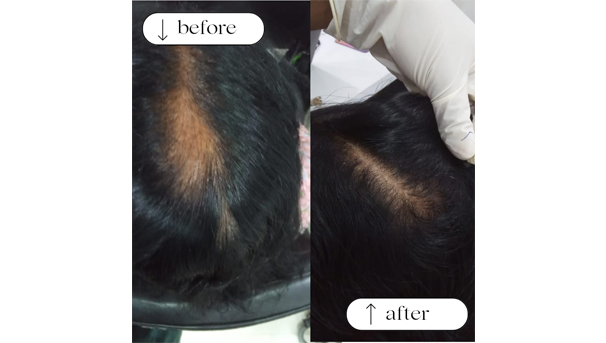PRP (Platelet-Rich Plasma) hair treatments involve injecting concentrated platelets from a patient’s own blood into the scalp to stimulate hair growth and improve hair quality, a non-surgical approach for hair loss.
- What is PRP?
PRP is a concentrated form of plasma containing a high concentration of platelets, which are rich in growth factors that promote healing and tissue regeneration.
- How does it work for hair loss?
The growth factors in PRP stimulate blood flow to hair follicles, potentially encouraging hair growth and improving the thickness and quality of existing hair.
-
The Procedure:
- A small sample of blood is drawn from the patient.
- The blood is processed to separate the PRP, which is then injected into the scalp, usually in areas of thinning or hair loss.
- PRP is often administered along with microneedling, another method of stimulating growth factor release.
- Effectiveness:
PRP treatments are considered a promising and effective non-surgical option for certain types of hair loss, particularly androgenetic alopecia (male and female pattern baldness).
- Course of Treatment:
PRP hair restoration typically involves multiple sessions (e.g., 3 sessions at 5-6 week intervals), followed by maintenance treatments.
-
Benefits:
- May stimulate hair growth.
- Can improve hair thickness and quality.
- May slow down or stop hair loss.
-
Considerations:
- PRP treatments are not a cure for all types of hair loss.
- Results can vary depending on the individual and the type of hair loss.
- Multiple sessions are usually required to see noticeable results.
- PRP is often combined with other treatments for hair loss, such as topical minoxidil (Rogaine) or oral finasteride (Propecia).


All Comments:
vrhnfg